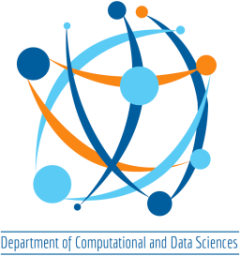Department of Computational and Data Sciences
Department Seminar
Speaker : Prof. Dr. Volker John, Berlin Germany
Title : “On Using Machine Learning Techniques for the Numerical Solution of Convection-Diffusion Problems”
Date & Time : February 13, 2024, 02:00 PM
Venue : # 102, CDS Seminar Hall
ABSTRACT
In the convection-dominated regime, solutions of convection-diffusion problems usually possesses layers, which are regions where the solution has a steep gradient. It is well known that many classical numerical discretization techniques face difficulties when approximating the solution to these problems.
Many stabilized discretizations of steady-state convection-diffusion equations lead to numerical solutions with notable spurious oscillations in a vicinity of layers. Using discontinuous Galerkin methods offers the possibility to reduce such oscillations effectively with post-processing techniques, so-called slope limiters. In the first part of the talk, several of these techniques from the literature and improvements proposed in [1, 2] will be discussed and numerical assessments will be presented. Then the question will be studied whether a feed forward neural network (multilayer perceptrons), which is trained on the basis of these techniques, is likewise able to limit spurious oscillations, see [3].
In recent years, physics-informed neural networks (PINNs) for approximating the solution to (initial-)boundary value problems received a lot of interest. In the second part of this talk, various loss functionals for PINNs are studied that are novel in the context of PINNs and are especially designed for convectiondominated convection-diffusion problems. They are numerically compared to the vanilla and a hp-variational loss functional from the literature based on two benchmark problems whose solutions possess different types of layers. It is observed in [4] that the best novel loss functionals reduce the L 2 (Ω) error by 17.3% for the first and 5.5% for the second problem compared to the methods from the literature.
This talk presents joint work with Derk Frerichs–Mihov and Linus Henning
References
[1] D. Frerichs, V. John, On reducing spurious oscillations in discontinuous Galerkin (DG) methods for steady-state convection–diffusion equations, Journal of Computational and Applied Mathematics 393 (2021) 113487. doi:10.1016/j.cam.2021.113487.
[2] D. Frerichs-Mihov, V. John, On a technique for reducing spurious oscillations in DG solutions of convection–diffusion equations, Applied Mathematics Letters 129 (2022) 107969. doi:10.1016/j.aml.2022.107969.
[3] D. Frerichs-Mihov, L. Henning, V. John, Using deep neural networks for detecting spurious oscillations in discontinuous Galerkin solutions of convection-dominated convection-diffusion equations, J. Sci. Comp. 97 (2023), Article 36. doi.org/10.1007/s10915-023-02335-x.
[4] D. Frerichs-Mihov, L. Henning, V. John, On loss functionals for physicsinformed neural networks for convection-dominated convection-diffusion problems, WIAS Preprint 3063, submitted, 2023 doi.org/10.20347/ WIAS.PREPRINT.3063.
BIOGRAPHY
Univ.-Prof. Dr. Volker John – Head of Research Group Numerical Mathematics and Scientific Computing Weierstrass Institute for Applied Analysis and Stochastics Mohrenstr. 39 10117 Berlin, Germany
More details about Prof. Volker John is available at https://www.wias-berlin.de/people/john/
Host Faculty: Prof. Sashikumaar Ganesan
ALL ARE WELCOME



